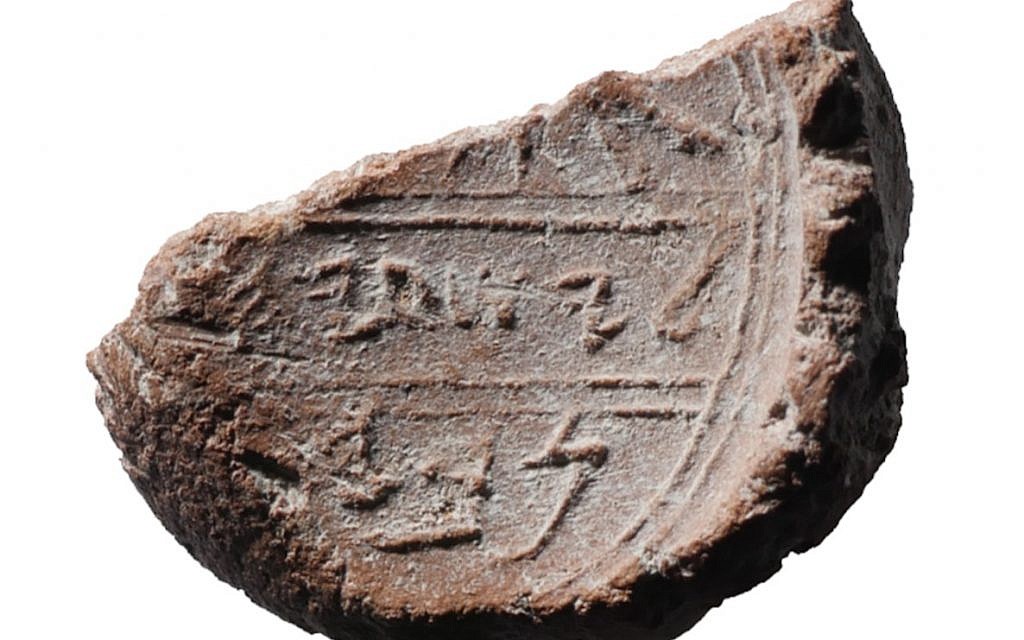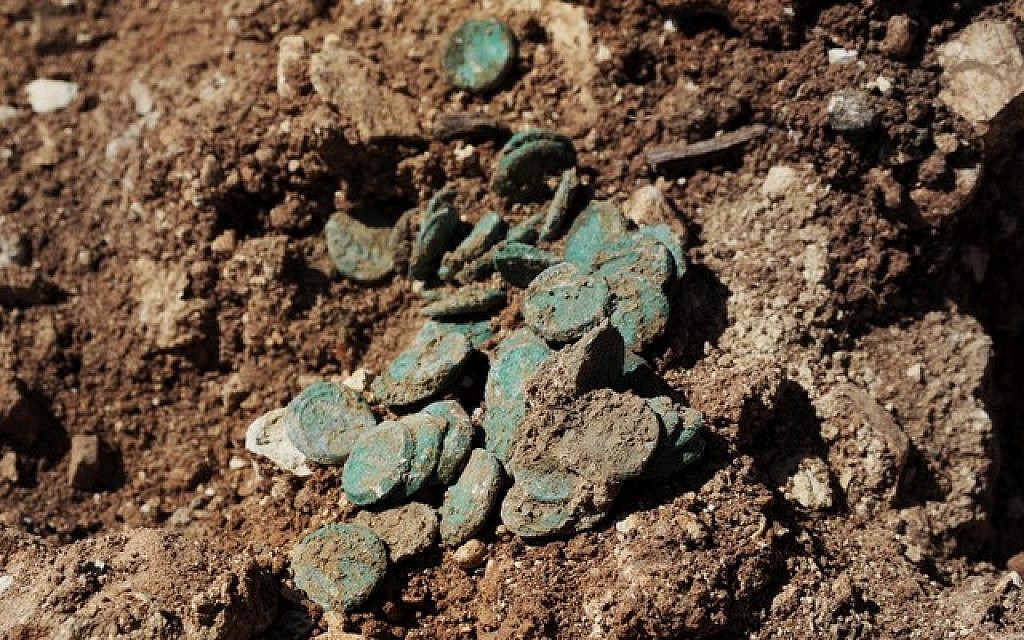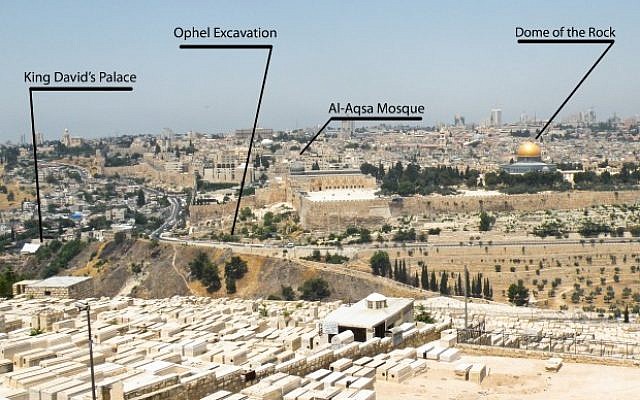A hoard of rare bronze Jewish Revolt coins has been discovered
at the recently renewed Ophel excavations. The trove of dozens of bronze
coins minted during the last years of the ill-fated four-year rebellion
of the Jews against Roman rule was uncovered in a cave just south of
the Temple Mount by Hebrew University archaeologist Dr. Eilat Mazar.
The Ophel excavations, located below the Temple Mount’s southern wall, were relaunched in early 2018 after a four-year hiatus. They garnered international headlines after the publication of the recent “Prophet Isaiah” seal impression, which was discovered in the lead-up to the current dig season.

Some 50 years ago, another hoard of Year Four coins was discovered by
Prof. Benjamin Mazar, Eilat Mazar’s grandfather, who conducted the
Temple Mount excavations near Robinson’s Arch abutting the Western Wall
following the 1967 Six Day War.
The recently discovered bronze coins are remnants left by hidden Jewish residents of besieged Second Temple Jerusalem, who sought refuge in the 7×14 meter cave in 66-70 CE, according to a press release from the Hebrew University.
The majority of the bronze coin hoard dates to the revolt’s final year, or Year Four (69-70 CE). They are decorated with Jewish symbols, including the four plant species associated with the holiday of Sukkot — palm, myrtle, citron and willow — and a chalice that may have been used by priests in the Temple.

The coins display a paleo-Hebrew inscription, which shifted — arguably reflecting the mood of the rebels — during the revolt from earlier years’ “For the Freedom of Zion,” to Year Four’s “For the Redemption of Zion.”
“A discovery like this — ancient coins bearing the words “Freedom” and “Redemption” — found right before the Jewish Festival of Freedom — Passover — begins is incredibly moving,” said Mazar in the press release.
The coins were found alongside broken pottery vessels, including jars and cooking pots. A Hasmonean Period layer is found at the base of the cave and these finds were uncovered directly above.
The cave, said Mazar, was undisturbed since the Second Temple period, creating a “time capsule” of Jewish life during the revolt.
Mazar stated in a promotional film about the renewed excavation that the cave was most likely used in the last days of the rebellion, just ahead of the destruction of the temple. Part of the current excavation’s goal is to further understand the use of the cave, which shows habitation from the First Temple period and perhaps before.
The Ophel excavations, located below the Temple Mount’s southern wall, were relaunched in early 2018 after a four-year hiatus. They garnered international headlines after the publication of the recent “Prophet Isaiah” seal impression, which was discovered in the lead-up to the current dig season.

Isaiah bulla, a 2,700-year-old clay seal impression which may have belonged to the biblical prophet Isaiah. (Ouria Tadmor/© Eilat Mazar)
The recently discovered bronze coins are remnants left by hidden Jewish residents of besieged Second Temple Jerusalem, who sought refuge in the 7×14 meter cave in 66-70 CE, according to a press release from the Hebrew University.
The majority of the bronze coin hoard dates to the revolt’s final year, or Year Four (69-70 CE). They are decorated with Jewish symbols, including the four plant species associated with the holiday of Sukkot — palm, myrtle, citron and willow — and a chalice that may have been used by priests in the Temple.

At the Ophel archaeological dig outside the walls of Jerusalem’s Old City, a hoard of rare bronze coins from the Jewish Revolt were recently discovered, dating to circa 66-70CE. (Eilat Mazar)
“A discovery like this — ancient coins bearing the words “Freedom” and “Redemption” — found right before the Jewish Festival of Freedom — Passover — begins is incredibly moving,” said Mazar in the press release.
The coins were found alongside broken pottery vessels, including jars and cooking pots. A Hasmonean Period layer is found at the base of the cave and these finds were uncovered directly above.
The cave, said Mazar, was undisturbed since the Second Temple period, creating a “time capsule” of Jewish life during the revolt.
Mazar stated in a promotional film about the renewed excavation that the cave was most likely used in the last days of the rebellion, just ahead of the destruction of the temple. Part of the current excavation’s goal is to further understand the use of the cave, which shows habitation from the First Temple period and perhaps before.
“This is an opportunity that doesn’t occur every day, to investigate a completely untouched cave at that important area of Jerusalem, just to the south of the Temple Mount in the area of the Ophel. It’s not going to be dull,” said Mazar.
A rare find of Year Four bronze coins
The Ophel bronze coin find is remarkable in that until today, most of the Jewish Revolt coin finds have dated to Year Two, when the Romans made great strides against the Jewish rebels. In fact, “the small amount of coins minted in the third year, and almost a complete lack of coins from the fourth year, indicates that most of the country was re-conquered by the Roman army fairly soon after the beginning of the revolt,” writes Robert Deutsch in his 2017 “The Coinage of the First Jewish Revolt against Rome, 66-73 C.E.”According to Deutsch, the bronze coins of the second and third years “are abundant and negligently manufactured.” The fourth year coins, however, “are of a slightly higher quality.”

A trove of coins from the Jewish Revolt found outside Jerusalem by IAA archaeologists in 2014. (photo credit: Vladimir Neichin, IAA)

No comments:
Post a Comment